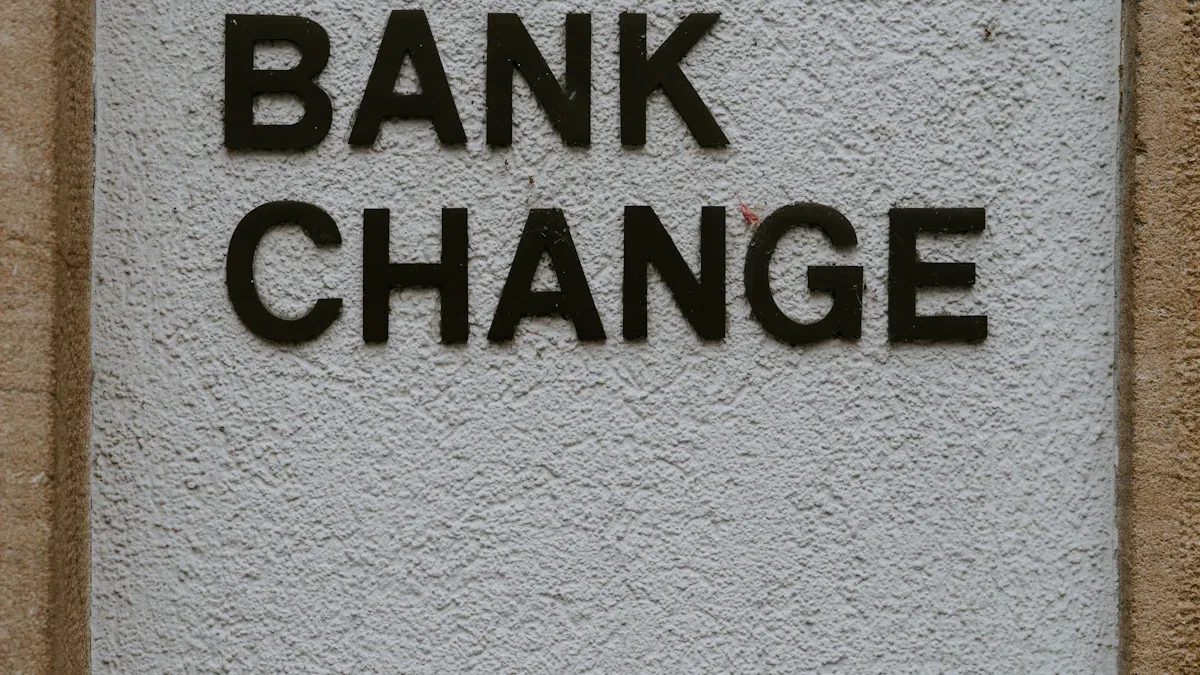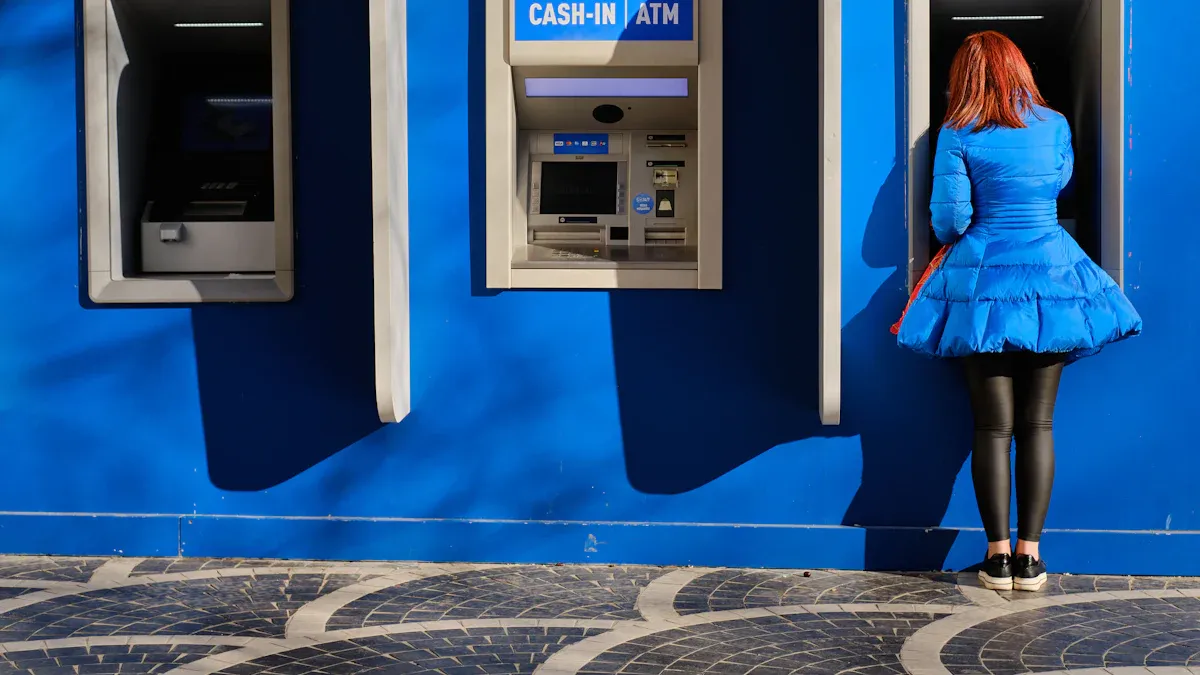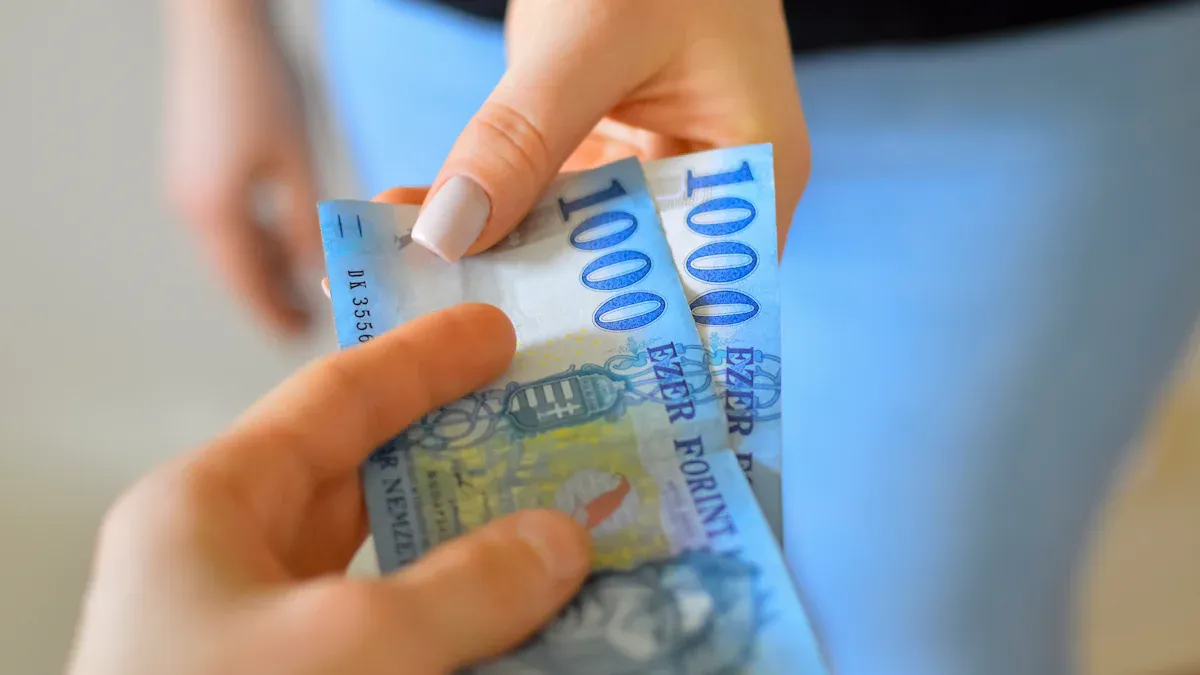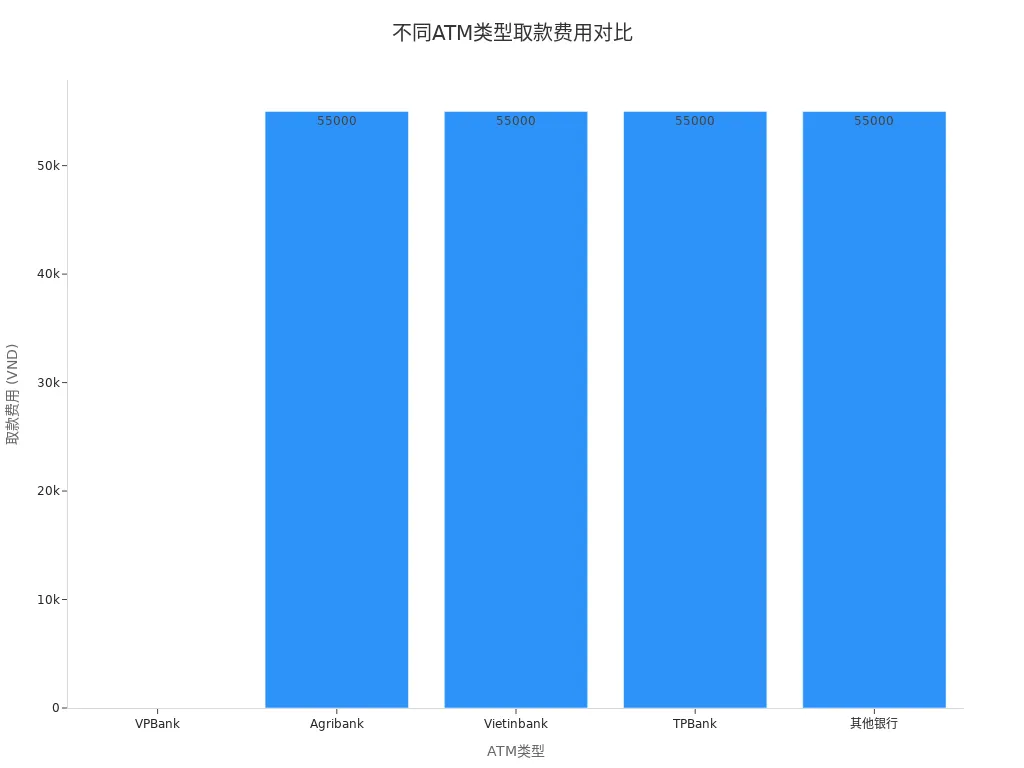- EasyCard
- Trade
- Help
- Announcement
- Academy
- SWIFT Code
- Iban Number
- Referral
- Customer Service
- Blog
- Creator
A Comprehensive Guide to Remitting Money from US Banks to Vietnam

Image Source: unsplash
When you want to send money from a US bank to Vietnam through remittance, you should first choose an appropriate transfer method. Common methods include online remittance services, mobile apps, traditional banks, wire transfers, and cryptocurrency. Different methods have varying fees and delivery speeds. For example, online services like Wise and Remitly offer lower fees, while traditional banks are convenient but more expensive. You need to prepare recipient information, bank account details, and the SWIFT code. Please understand the specific process for each method in advance and ensure the accuracy of the information to reduce delays.
| Transfer Method | Description |
|---|---|
| Online Remittance Services | Wise, Remitly, WorldRemit, etc., with low fees and favorable rates. |
| Remittance Apps | Xoom, OFX, Paysend, etc., with high exchange rates, low fees, and support for bank cards. |
| Traditional Banks | Wells Fargo, Chase, etc., with high fees and average rates. |
| Cryptocurrency and Blockchain Transfers | Requires technical knowledge, suitable for users familiar with digital currencies. |
| BizPay by TransFi | Ideal for businesses and freelancers, with fast speeds and low costs. |
Key Takeaways
- Choose the appropriate transfer method. Online remittance services typically have low fees and fast delivery, suitable for most users.
- Ensure accurate recipient information. Any errors may lead to delays or transfer failures, so double-check names and bank details.
- Understand the fees and delivery times of different methods. International remittance platforms often offer transparent fees and quick delivery, ideal for cost-conscious users.
- Stay vigilant to avoid fraud risks. Choose providers with strong security records to protect personal and financial information.
- Keep transfer receipts and confirmation numbers. This facilitates tracking and issue resolution, ensuring funds arrive safely.
US Bank Transfer Process

Image Source: pexels
There are multiple ways to send money from a US bank to Vietnam. You can choose online operations or visit a bank branch. Different methods have distinct processes and characteristics. Below is a detailed explanation of each method’s steps and precautions.
Online Operation Steps
You can complete transfers through a US bank’s online banking or international remittance platforms. Online operations are convenient and fast, suitable for most users. Here are the common steps for online transfers:
- Log in to your US bank online banking account and go to the wire transfer or international remittance page.
- Enter the recipient’s detailed information, including name, address, and account type.
- Provide the receiving bank’s account number, SWIFT code, and branch address.
- Enter the amount you wish to send and select the currency (typically USD or VND).
- The system will display the estimated fees and exchange rate. You need to confirm this information.
- Pay the transfer processing fee and submit the transfer request.
- Upon completion, the bank will generate an electronic receipt. You can download or save this receipt.
Online remittance platforms (e.g., Remitly, Xoom, Western Union) offer similar processes. You only need to register an account, link a bank or credit card, and follow the platform’s instructions to enter recipient and bank details. Platforms typically provide electronic receipts upon completion and allow real-time tracking of transfer progress.
Tip: Online remittance platforms use multiple security measures, including account verification, data encryption, and 24-hour fraud monitoring. Your personal information and funds are strictly protected. You can check the transfer status at any time to ensure fund security.
| Transfer Method | Processing Time |
|---|---|
| Online Transfer | Most banks deliver by the next business day |
In-Person Process
If you prefer face-to-face transactions for US bank transfers, you can visit a bank branch. In-person processes are suitable for users needing assistance or handling large transfers. The steps are as follows:
- Visit a US bank branch in your city.
- Inform the counter staff that you need to process an international transfer to Vietnam.
- Fill out the international wire transfer form, providing the recipient’s name, address, bank account details, SWIFT code, and branch address.
- Bank staff will verify your information and inform you of the fees and exchange rate.
- You need to pay the applicable transfer fees.
- After confirming all details are correct, the bank will process your transfer request and provide a paper receipt.
Note: In-person transactions require valid identification. Keep the receipt safe for future reference or verification.
Key Differences Between Methods
| Transfer Method | Features | Fee Details |
|---|---|---|
| Wire Transfer | Direct bank transfer requiring detailed recipient bank information. | Higher fees, average exchange rates. |
| International Remittance Platforms | Western Union, Remitly, etc., support multiple payment methods and are user-friendly. | Lower fees, rates slightly below wire transfers. |
| ATM Withdrawal | Recipients can withdraw cash directly from ATMs in Vietnam, ideal for urgent needs. | Potential hidden fees, generally favorable rates. |
When choosing a US bank transfer method, weigh your needs, delivery speed, and fee considerations. Online methods suit users seeking efficiency and convenience, while in-person methods are ideal for those needing assistance or handling large transactions. International remittance platforms are suitable for users aiming to save on fees and secure better exchange rates.
Required Documents for Transfers
When processing a US bank transfer to Vietnam, you need to prepare complete and accurate documents. The accuracy of the information directly impacts delivery speed and transfer success. Below is a detailed breakdown of each required piece of information and precautions.
Recipient Information
You must provide detailed recipient information. Any errors may result in the transfer being returned or delayed. Please verify the following:
| Required Information | Description |
|---|---|
| Recipient’s Full Name and Address | Recipient’s complete name and address |
| Bank Account Number | Recipient’s bank account number |
| Bank Address | Address of the receiving bank |
| BIC/SWIFT | Bank identification code of the recipient |
When entering the recipient’s name, ensure it matches the name registered with the Vietnamese bank system exactly. Vietnamese banks are strict about name spelling and diacritics. For example, if the official name is “Nguyễn Văn Hòa,” you cannot write “Nguyen Van Hoa.” Even a single letter or diacritic difference may lead to the bank rejecting the transfer. You also need to accurately provide the recipient’s detailed address, which helps the bank verify identity.
Tip: Ask the recipient to confirm all details in advance, especially name spelling and address specifics, to avoid rejections or delays due to discrepancies.
Bank Account and SWIFT Code
Bank account details and the SWIFT code are critical for international transfers. The SWIFT code (also known as BIC) identifies the receiving bank, ensuring funds reach the correct account. You need to prepare the following:
| Role | Description |
|---|---|
| Role of SWIFT Code | The SWIFT code, e.g., ICBVVNVXXXX, ensures secure and accurate international transactions, guiding funds to the correct financial institution. |
| How to Find SWIFT Code | You can quickly find and verify SWIFT codes using tools like Xtransfer to ensure payments reach the correct destination. |
| Importance of SWIFT Code | SWIFT codes serve as a routing mechanism in global banking, reducing errors and saving time and resources. |
When entering the bank account number, ensure the digits are correct. SWIFT codes typically consist of 8 to 11 alphanumeric characters. You can find and verify SWIFT codes through the receiving bank’s website, international remittance platforms, or professional tools like Xtransfer. Entering an incorrect SWIFT code may prevent funds from reaching the destination or cause returns.
Note: When processing a US bank transfer, the system will require the SWIFT code. Double-check with the recipient or their bank to avoid losses due to errors.
Branch Name and Address
Vietnamese banks have strict requirements for branch names and addresses. You need to provide the receiving bank’s branch name and detailed address. Here are the key considerations:
- Vietnamese banks require the provided name to match their records exactly, including any accents or diacritics.
- If the official name is “Nguyễn Văn Hòa” and you enter “Nguyen Van Hoa,” the bank may reject the transfer.
- Minor errors in documents, such as missing letters, misplaced diacritics, or Westernized spellings, may lead to immediate rejection by the receiving bank.
When entering the branch name and address, copy the information directly from the recipient to avoid spelling errors during manual input. A detailed branch address helps the bank locate the account quickly, improving delivery efficiency.
Tip: Ask the recipient to provide a photo or screenshot of their bank account details to ensure all information is accurate, significantly reducing the risk of transfer failure due to errors.
Accurate and complete document preparation is the foundation for a successful US bank transfer. Double-check all critical details, especially names, account numbers, SWIFT codes, and branch addresses, before each transfer. This effectively prevents delays and unnecessary losses.
Fees and Delivery Time

Image Source: pexels
Fees for Different Methods
When choosing a US bank transfer to Vietnam, fees and exchange rates are primary concerns. Fees vary significantly across methods. Generally, traditional bank wire transfers have higher fees, typically $30–50 per transaction, and banks add a markup to the exchange rate. International remittance platforms like Xoom, Remitly, and PayPal offer transparent fees, usually between $1–10, with rates disclosed upfront. Refer to the table below for fee details of common platforms:
| Platform | Fee Description |
|---|---|
| PayPal | Charges transaction and currency conversion fees for international personal payments and purchases. |
| Xoom | Clear fees and upfront exchange rates, ensuring the recipient receives the expected amount. |
Most high-street banks offer less favorable exchange rates compared to international remittance platforms. Banks may also charge hidden conversion fees, reducing the actual amount received. International platforms typically provide better rates and lower fees, ideal for cost-conscious users.
Tip: Compare the total fees, including transaction fees and exchange rate differences, before transferring to maximize the recipient’s received amount.
Delivery Time
Delivery time is a key factor to consider. Different methods have varying speeds:
| Transfer Method | Average Time |
|---|---|
| Cash Pickup | Minutes |
| Bank Transfer | 1–2 business days |
| Vimo Mobile Wallet | Minutes |
If you choose international remittance platforms, recipients can receive funds in minutes via cash pickup or mobile wallets. Bank transfers typically take 1–2 business days. Transfers during holidays or weekends may experience delays. Regulatory requirements, incomplete documents, or currency conversion issues can also cause delays.
- Regulatory Requirements: The State Bank of Vietnam requires proof of transfer purpose and related documents.
- Currency Issues: Non-VND transfers may involve mandatory conversions and additional fees.
- Missing Documents: Lack of required documents can delay bank reviews.
- Bank Schedules: Banks do not process transfers on weekends or holidays, which can delay delivery.
Transfer Limits
You should also note the limit regulations for each method. US bank wire transfers have no official upper limit, but actual limits depend on the bank or platform’s policies. International remittance platforms typically set daily or monthly limits, varying based on your verification level and the receiving bank’s policies. Some platforms allow thousands of dollars per transfer, while others are stricter.
- US bank wire transfers have no official limit, but banks set caps based on risk and compliance.
- International remittance services like Western Union, Remitly, and Xoom set limits based on your account level and transfer purpose.
- For transfers exceeding $3,000, US financial regulators may require additional identity and proof of funds documentation.
For large transfers, prepare relevant documents, such as proof of income and transfer purpose, in advance to avoid delays due to failed reviews.
Comparison of Transfer Methods
Bank Wire Transfer
You can use a bank wire transfer to send funds from the US to Vietnam. This method is suitable for large transfers or direct deposits to the recipient’s bank account. The advantages of bank wire transfers include high security, with funds protected by the Federal Deposit Insurance Corporation (FDIC), and no need for the recipient to open an additional account. You only need to provide the recipient’s account details and SWIFT code to complete the process.
| Advantages | Disadvantages |
|---|---|
| Free transfers between US banks | Delivery may take up to 3 business days |
| Recipients don’t need an account to receive funds | Some providers may not support international transfers |
| Banks are regulated, ensuring fund security | International fees and exchange rate costs may apply |
Bank wire transfers typically incur multiple fees, including 1%–3% foreign transaction fees, about 1% currency conversion fees, and $0–50 wire transfer fees. You should note delivery times, usually 1–3 business days. Bank wire transfers are ideal for users with high security and compliance needs.
International Remittance Platforms
You can also choose international remittance platforms like Western Union, Remitly, or Xoom. These platforms are user-friendly, support multiple payment methods, and are suitable for users seeking fast delivery or flexible withdrawal options. They typically offer mobile apps and multilingual support, allowing transfers anytime, anywhere.
| Platform | Advantages | Disadvantages |
|---|---|---|
| Remitly | Multilingual support, user-friendly mobile app, flexible transfer speed options. | No physical branches, pickup locations vary by country. |
| Western Union | Over 500,000 cash pickup locations, wide global coverage. | Fees vary by amount and destination, potentially high. |
Remitly and Western Union use modern encryption protocols and multi-factor authentication to ensure your funds’ safety. Platform fees vary based on amount, speed, and payment method, typically $1–10. You can choose between fast delivery or economy services based on your needs. International platforms are ideal for users prioritizing speed and flexibility.
Tip: These platforms use automated AML/KYC systems and AI-driven fraud detection to ensure compliance and fund security.
ATM Withdrawal
You can also allow recipients to withdraw cash directly from ATMs in Vietnam. This method is suitable for urgent needs or recipients without bank accounts. ATM withdrawal fees and limits vary by bank. For example, VPBank supports free withdrawals, while banks like Agribank and Vietinbank charge about $2–3 per transaction, with maximum withdrawals ranging from 3,000,000 to 10,000,000 VND.
| ATM Type | Withdrawal Fee (USD) | Maximum Withdrawal Amount (VND) | Notes |
|---|---|---|---|
| VPBank | 0 | 10,000,000 | Free withdrawal |
| Agribank | 2.2 | 3,000,000 | Charges withdrawal fee |
| Vietinbank | 2.2 | 3,000,000 | Charges withdrawal fee |
| TPBank | 2.2 | 10,000,000 | Charges withdrawal fee |
| Other Banks | 2.0–2.2 | 3,000,000 | Charges withdrawal fee |

When using ATMs in Vietnam, choose VND withdrawals to avoid unfavorable dynamic currency conversion rates. ATM withdrawals are ideal for recipients needing cash and unable to visit bank branches.
Summary: When choosing a transfer method, consider fees, delivery speed, and security. Bank wire transfers suit large amounts and high-security needs, international platforms are ideal for speed and flexibility, and ATM withdrawals meet urgent cash needs. Selecting the right method ensures your funds reach Vietnam safely, quickly, and cost-effectively.
Precautions
Errors in Information Entry
When filling out transfer details, common errors include misspelled names, incorrect account numbers, or inaccurate SWIFT codes. These mistakes can lead to delays, returns, or even unrecoverable funds. Pay special attention to the following common errors:
- Recipient name inconsistent with bank records
- Incorrect or missing bank account numbers
- Wrong SWIFT code
- Incomplete branch address
If you discover errors in submitted transfer information, take the following steps to correct them promptly:
- Contact the remittance provider immediately to explain the situation.
- Submit a written error notification detailing the issue.
- Provide your name and contact information.
- Provide the recipient’s name and contact information.
- Specify the transfer amount and error details.
The sooner you address errors, the easier it is for the bank or platform to recover or correct the transfer. Double-check all information before transferring to avoid unnecessary losses.
Risk Prevention
During cross-border transfers, you may encounter fraud and information leakage risks. Common fraud types include:
- Romance scams: Fraudsters build fake relationships via social media or dating sites, fabricating stories about financial needs.
- Financial scams: Emails requesting bank account or personal information verification to gain access to your financial accounts.
- Identity theft: Fraudsters collect your personal information to impersonate you in financial transactions.
Adopt the following best practices to protect your personal and financial information:
- Choose online remittance companies with strong security records, prioritizing licensed Hong Kong banks or reputable international platforms.
- Verify that websites have SSL encryption and two-factor authentication.
- Do not share login credentials or open suspicious emails.
- Double-check recipient details and amounts before confirming transfers.
- Keep antivirus software updated and stay cautious when using public Wi-Fi.
Stay vigilant during transfers and consult bank or platform customer service immediately if you notice anything unusual. Security awareness helps you avoid fraud and financial risks.
When transferring from a US bank to Vietnam, note the following:
- Verify all transfer details to ensure accuracy.
- Understand the fees and rates of each method to choose the most suitable provider.
- Use secure payment channels to protect account information.
- Keep transfer receipts and confirmation numbers for future reference.
- Monitor delivery times to plan fund usage effectively.
By following these steps, you can enhance the safety and efficiency of your transfers, ensuring funds reach Vietnam smoothly.
FAQ
What basic documents are needed for transfers to Vietnam?
You need to prepare the recipient’s name, bank account number, receiving bank name, branch address, and SWIFT code. All information must be accurate to avoid delays or returns.
How fast can a US bank transfer reach Vietnam?
With international remittance platforms, transfers can arrive in minutes. Bank wire transfers typically take 1–3 business days. Holidays or incomplete documents may extend delivery time.
Are there transfer amount limits?
US banks generally have no official upper limit, but actual limits depend on bank policies and platform regulations. Large transfers may require proof of funds.
What should I do if a transfer fails?
Contact the bank or platform customer service immediately, explain the issue, and provide relevant receipts and corrected information. They will assist in recovering or correcting the transfer.
How can I ensure fund safety during transfers?
Choose reputable platforms with strong security records. Do not disclose account information. Verify recipient details before transferring and retain all receipts.
Sending money from the U.S. to Vietnam doesn’t have to mean high fees and slow processing. BiyaPay offers a smarter solution with global reach, enabling same-day transfers and real-time fund availability. Convert between fiat and digital currencies like USDT seamlessly, bypassing traditional banking bottlenecks for faster, more efficient transactions. With transfer fees as low as 0.5%, you can save significantly compared to conventional methods. Stay informed with accurate exchange rate comparisons to avoid hidden costs. No overseas bank account? No problem—get started in minutes. Manage both U.S. and Hong Kong stocks from one integrated platform, streamlining your global investment strategy. Experience faster, more cost-effective cross-border finance today. Sign up on BiyaPay and take control of your international money transfers with confidence.
*This article is provided for general information purposes and does not constitute legal, tax or other professional advice from BiyaPay or its subsidiaries and its affiliates, and it is not intended as a substitute for obtaining advice from a financial advisor or any other professional.
We make no representations, warranties or warranties, express or implied, as to the accuracy, completeness or timeliness of the contents of this publication.




Contact Us
Company and Team
BiyaPay Products
Customer Services
is a broker-dealer registered with the U.S. Securities and Exchange Commission (SEC) (No.: 802-127417), member of the Financial Industry Regulatory Authority (FINRA) (CRD: 325027), member of the Securities Investor Protection Corporation (SIPC), and regulated by FINRA and SEC.
registered with the US Financial Crimes Enforcement Network (FinCEN), as a Money Services Business (MSB), registration number: 31000218637349, and regulated by FinCEN.
registered as Financial Service Provider (FSP number: FSP1007221) in New Zealand, and is a member of the Financial Dispute Resolution Scheme, a New Zealand independent dispute resolution service provider.




















